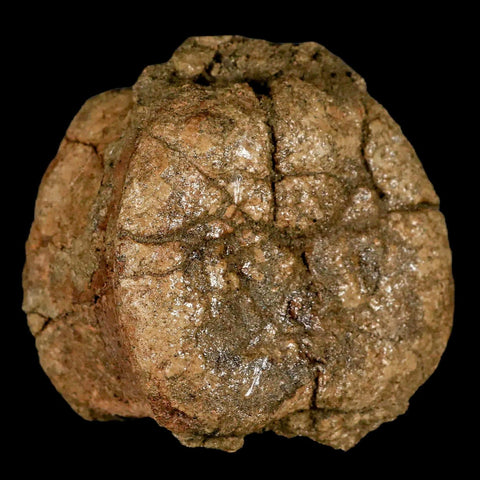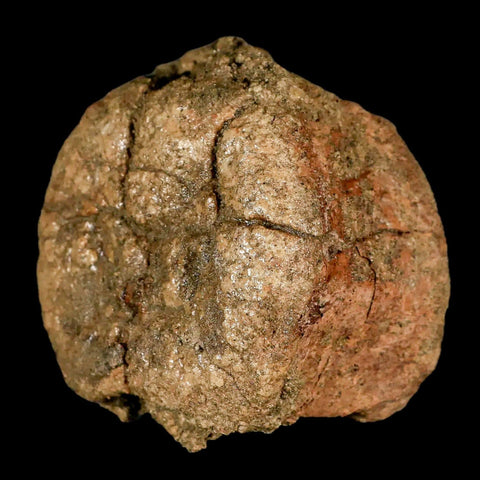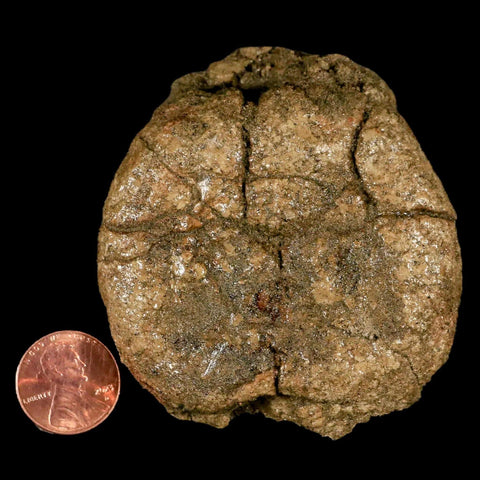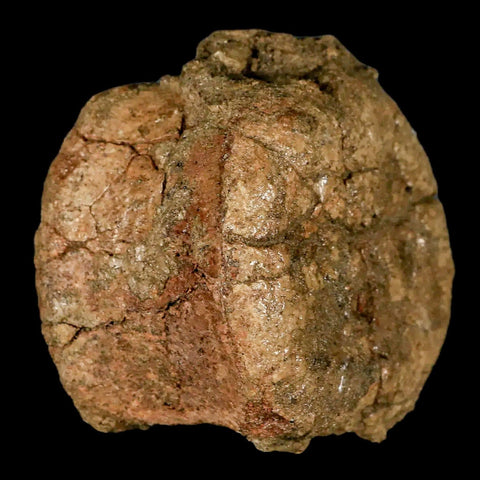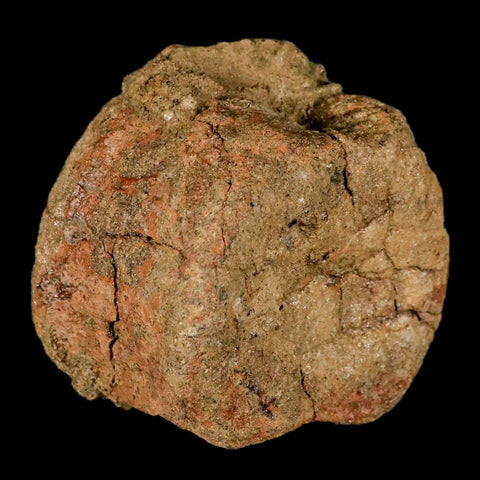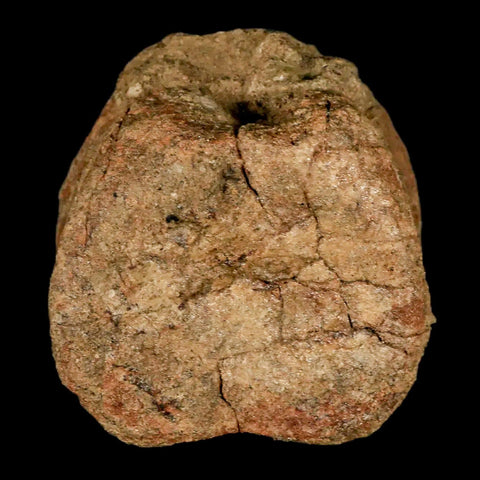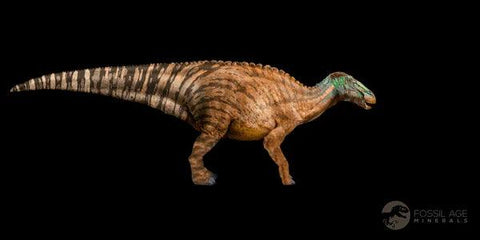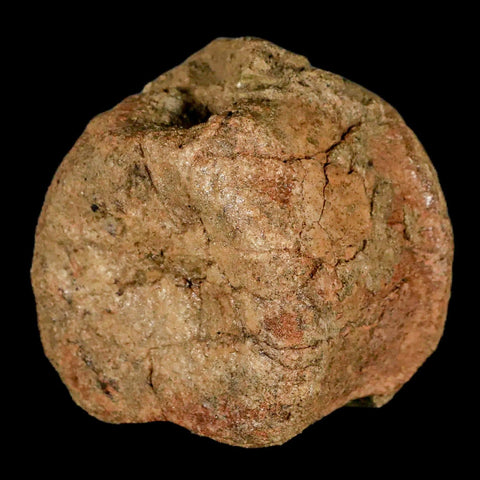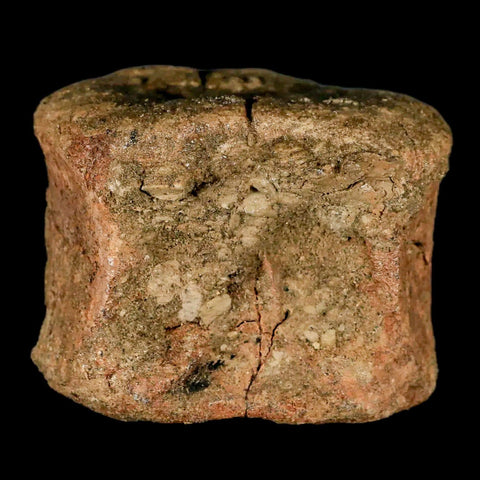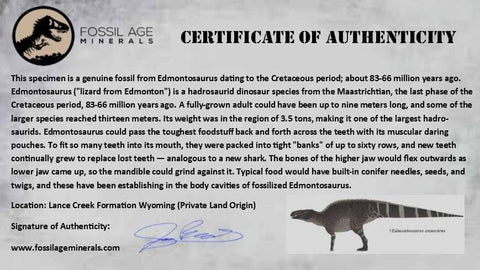2.8" Edmontosaurus Fossil Vertebrae Bone Lance Creek FM Cretaceous Dinosaur WY
Location: Lance Creek Formation, Wyoming (Private Land Origin)
Weight: 9.5 Ounces
Dimensions: 2.8 Inches Long, 2.5 Inches Wide, 1.9 Inches Thick
Comes with a Certificate of Authenticity.
The item pictured is the one you will receive.
This is a genuine fossil.
Edmontosaurus ("lizard from Edmonton") is a hadrosaurid dinosaur species from the Maastrichtian, the last phase of the Cretaceous period, 71-65 million years ago. A fully-grown adult could have been up to nine meters long, and some of the larger species reached thirteen meters. Its weight was in the region of 3.5 tonnes, making it one of the largest hadrosaurids.
Edmontosaurus could pass the toughest foodstuffs back and forth across the teeth with its muscular, daring pouches.
To fit so many teeth into its mouth, they were packed into tight "banks" of up to sixty rows, and new teeth continually grew to replace lost teeth — analogous to a new shark. The bones of the higher jaw would flex outwards as the lower jaw came up, so the mandible could grind against it. Typical food would have built-in conifer needles, seeds, and twigs, and these have been established in the body cavities of fossilized Edmontosaurus. It was evidently a tree-browser.
The 1908 Wyoming find was notable for preserving fossilized imprints of Edmontosaurus skin. Rapid drying and impression in sediment allowed the skin’s texture to be fixed, revealing a scaly, leathery surface. Anatomically, the thigh muscle lies beneath the body’s skin, creating the impression that the leg originates at the knee, with the entire thigh enveloped by skin, enhancing its duck-like appearance. Additionally, a series of tubercles was present along the neck, back, and tail, providing further insight into its integumentary structures.
Edmontosaurus primarily exhibited bipedal locomotion but was undoubtedly capable of quadrupedal movement. Its forelimbs, though shorter than the hindlimbs, were sufficiently robust to support weight-bearing activities. The manus featured hooves on two digits accompanied by pads reminiscent of those found in Camarasaurus. The pes bore two hooked toes, indicative of strong muscular attachments in the lower limbs. The downward curvature of the vertebral column at the scapular region suggests a low browsing posture near the substrate. Despite well-developed limbs, Edmontosaurus likely moved slowly and lacked significant defensive adaptations, relying heavily on acute sensory capabilities—vision, audition, and olfaction—for predator detection and survival.



